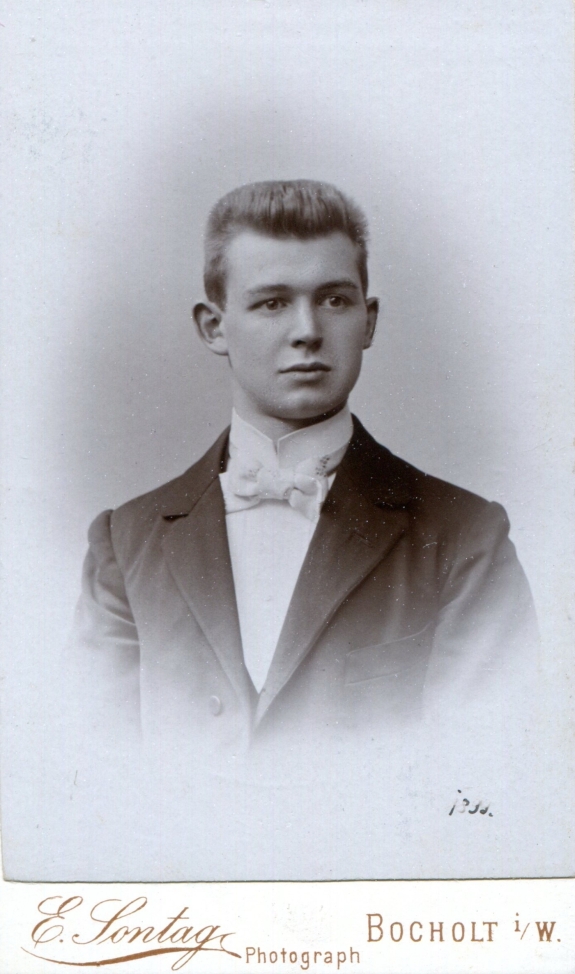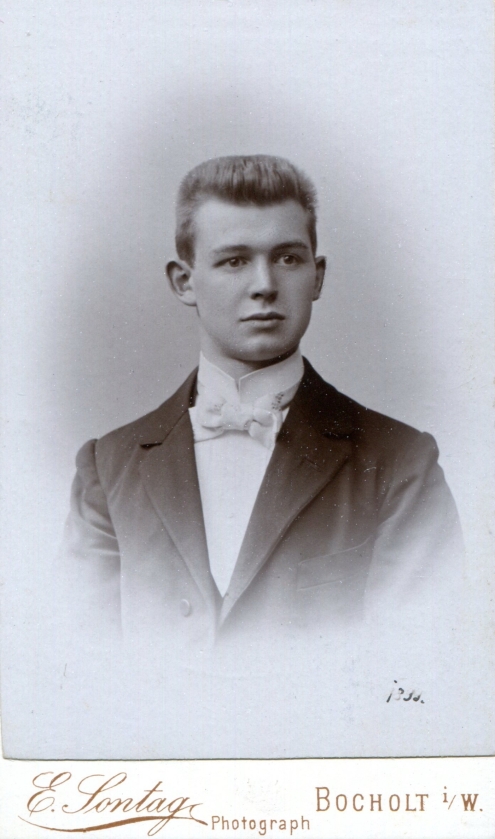The photographic studio of Ernst Sontag
The photographic studio of Ernst Sontag
For once, the photograph now intended for presentation is not really concerned with its content.
This image from 1899, a portrait vignette of an unknown man in a suit jacket, bow tie and stand-up collar ("Vatermörder") mounted on a cardboard base, initially functions only as a representative of a product, in a sense as an example of countless photographs of its maker.
It was taken in the studio of photographer Ernst Sontag. Born in Pössneck (Thuringia) in 1870, he took over the Bocholt photo studio from Fritz Unverdroß, who had been practising in Wiethold'scher Garten an der Schanze for several years, on 28 February 1897.
According to a legally binding decision by the district court, the family name was "Sonntag", but the new owner left it at the previous spelling "Ernst Sontag", presumably to emphasise its conspicuousness or to use a kind of stage name. Subsequently, the former name continued to appear in the adverts and, of course, in the studio names on the photographs themselves.
Ernst Sontag continued to work on the Schanze for the first three years, but moved his studio from there to Südwall 1 (on the corner of Kaiserstraße) on 19 October 1900. In his opening advert, he stated: "The studio is equipped with the latest equipment and lenses, as well as the latest decorations in the best possible way, completely in keeping with modern times." He photographed there for five and a half years before appointing Max Bohn as managing director in 1906 and moving to Wesel. However, he continued to own the studio on Südwall and also ran a branch on Isselburger Straße in Anholt for a time.
"Meet the highest requirements"
In addition to portraits, Ernst Sontag also produced group shots and architectural images, as well as life-size enlargements. "Thanks to years of working in only the first shops in Germany and abroad, I am able to meet the highest demands", he advertised in one of his adverts. His product range also included snapshots of children, colour photographs in oil, watercolour and pastel, enamel pictures for brooches, pins and cufflinks.
In January 1909, Ernst Sontag commissioned the photographer Otto Vahle to manage the business. But just one year later, his studio became the property of the Borken-based company Elsner. Perhaps some of you will still find photos of Ernst Sontag in old family albums or forgotten photo boxes. If you like, you can donate them to the town archive as a sign of cultural and historical appreciation.




